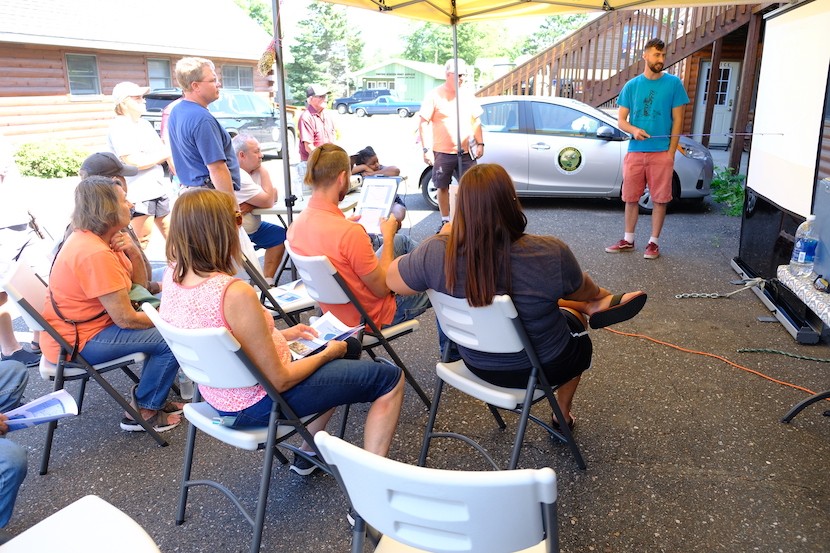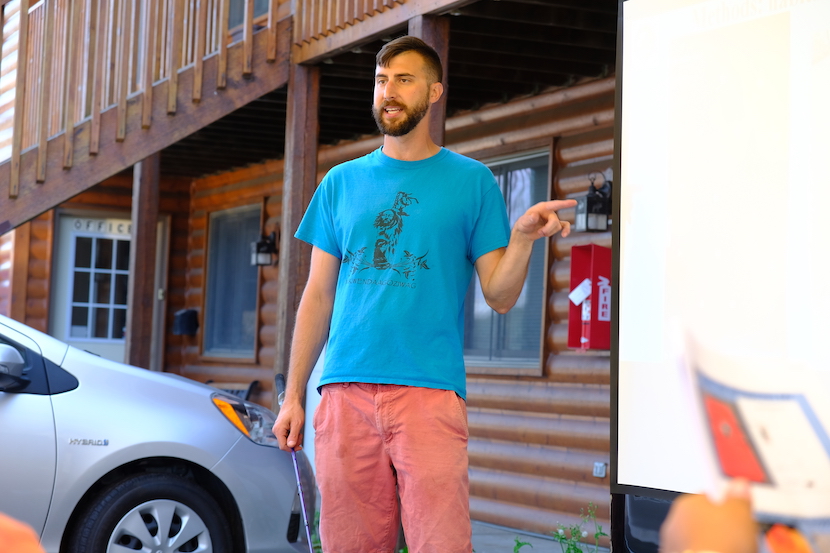
The Government Affairs Department and the Department of Natural Resources hosted an open house during Wahkon Days on Saturday, August 17, with two presentations by Biologist Carl Klimah about the Fisheries Programs ogaa (walleye) tracking study.
An informed and engaged audience listened closely to Carl's presentation, asked questions, and enjoyed lunch courtesy of the Band. Wahkon Days visitors also had a chance to tour the Government Affairs office and see an aquarium stocked with walleyes and perch hatched by the Band's aquaculture program.
Carl's presentation summarized data about the ogaa population in Mille Lacs and showed how the tracking study may help to explain the apparent decline of the species in the lake.
Scientists have been concerned about the declining number of ogaa in Mille Lacs since population estimates in 2013 showed a record low number of the iconic fish. Although ogaa reproduction has been good, surveys indicate that young walleyes are disappearing after their first year, and the Band's tracking study is an attempt to find out why.
Beginning in the mid-1990s, state and tribal biologists started seeing increases in water clarity, which has continued to increase with the invasion of zebra mussels and spiny water fleas. Since ogaa prefer darkness, water clarity may be shrinking their optimal habitat in the lake.
Average air temperatures have increased 1.8 degrees since the '90s as well, which may further reduce the optimal habitat for ogaa.
The study uses acoustic telemetry to monitor the location, behavior, movements, and survival of fish by emitting sound waves from surgically implanted transmitters to a grid of receivers anchored to the lake bottom.
The transmitters in the fish send "pings" to the receivers, which record the depth, water temperature, and habitat of the fish. To date, the receivers have collected over 100,000 pings.
The study is testing the hypothesis that increased water clarity and air temperatures have reduced the optimal thermal habitat for ogaa, forcing both adults and juveniles into smaller areas, leading to competition for limited food and even cannibalism of juvenile fish by adults.
Tribal researchers — including biologists and technicians from the Great Lakes Indian Fish and Wildlife Commission (GLIFWC) — have surgically implanted transmitters into the bellies of 70 adult ogaa (greater than 18 inches) and 70 juveniles (7-11 inches).
They have also tagged 20 yellow perch (5.5-10 inches) and 20 northern pike (19-43 inches).
The Mille Lacs Band takes the health of the lake seriously and is making an investment in the future of Mille Lacs Lake for all. The information gathered from the study will be used to develop management strategies that may include rehabilitation or protection of key habitats and aid in the recovery of the walleye population.
Photos: Biologist Carl Klimah of the Mille Lacs Band DNR's Fisheries Program gave two presentations on the ogaa tracking study at Wahkon Days on Saturday, August 17, at the Government Affairs office in Wahkon.
